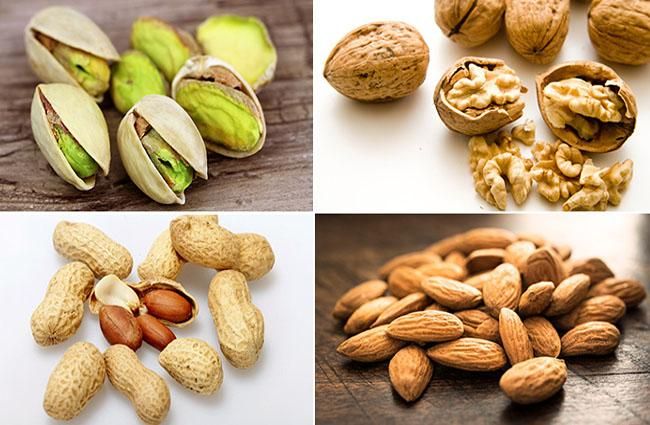Nuts are very good for you. While they are high in fat, in most cases, it’s healthy fat. They’re also a good source of fiber and protein. Many studies have shown that nuts have a number of health benefits, especially in regards to reducing risk factors for heart disease. This article discusses different types of nuts and evidence of their health benefits.
Health benefits of eating nuts
In general, nuts are good sources of fat, fiber and protein. Most of the fat in nuts is monounsaturated fat, as well as omega-6 and omega-3 polyunsaturated fat. However, they do contain some saturated fat. Nuts also contain a number of vitamins and minerals, including magnesium and vitamin E. Many studies have investigated the health benefits of increased nut intake. One meta-analysis of 33 studies found that diets high in nuts do not significantly affect weight gain or weight loss.
- Almonds
Almonds are tree nuts that contain a number of beneficial nutrients. Almonds may improve cholesterol levels. A number of small studies have found that eating an almond-rich diet can reduce “bad” LDL cholesterol, total cholesterol and oxidized LDL cholesterol, which is particularly harmful to heart health. However, many of these studies used a small number of participants. One larger study combined the results of five other studies and concluded that the evidence isn’t strong enough to suggest that almonds definitively improve cholesterol. Nevertheless, almonds consumed as part of a low-calorie diet may aid weight loss and lower blood pressure in people who are overweight or obese.
- Pistachios
Pistachios are a commonly consumed nut that is high in fiber. Similarly to almonds, pistachios may improve cholesterol levels. Eating 2–3 ounces of pistachios a day may help increase “good” HDL cholesterol. Also, pistachios may help improve other risk factors for heart disease, including blood pressure, weight and oxidative status. Oxidative status refers to blood levels of oxidized chemicals, which can contribute to heart disease. Furthermore, pistachios may help reduce the rise in blood sugar after a meal.
- Walnuts
Walnuts are a very popular nut and an excellent source of the omega-3 fatty acid alpha-linolenic acid. Walnuts appear to improve a number of risk factors for heart disease. This may be due to their high content of ALA and other nutrients. A number of large studies have found that eating walnuts significantly reduced total cholesterol and LDL cholesterol, while increasing “good” HDL cholesterol.
- Cashews
Cashews are part of the tree nut family and have a good nutrient profile. A number of studies have examined whether diets high in cashews can improve symptoms of metabolic syndrome. One study found that a diet containing 20% of calories from cashews improved blood pressure in people with metabolic syndrome.
- Hazelnuts
Hazelnuts are very nutritious. Like many other nuts, hazelnuts appear to have beneficial effects on risk factors for heart disease. One study found that a hazelnut-rich diet reduced total cholesterol, LDL cholesterol and triglycerides. It also reduced markers of inflammation and improved blood vessel function. Other studies have shown that hazelnut diets can improve cholesterol levels and increase the amount of vitamin E in the blood.
Courtesy healthline.com








